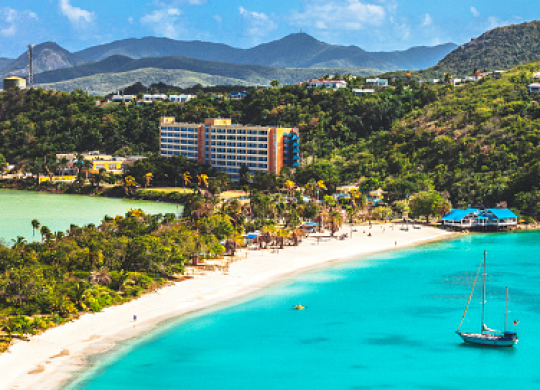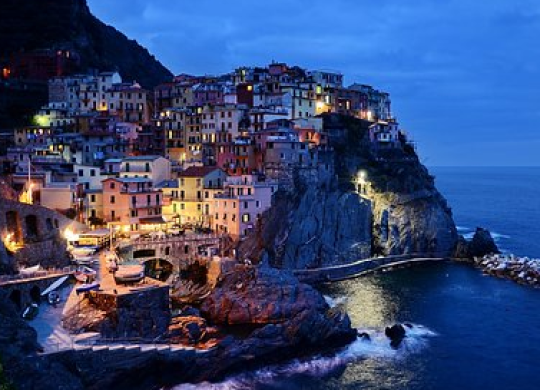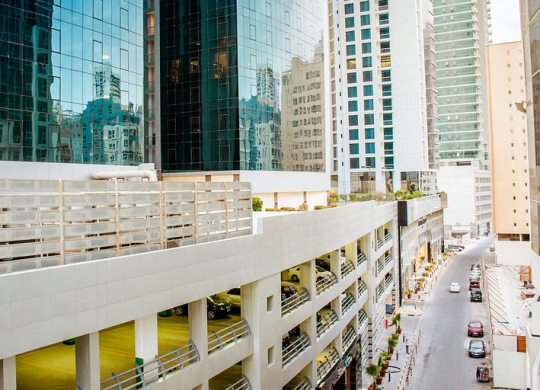Antigua and Barbuda is a land of beaches. How to visit the country for the perfect beach holiday
Table of contents

Residents of Antigua and Barbuda claim that their country has exactly 365 beaches, one for each day of the year. Whether it is true or not is unknown. But it is clear that the main tourist attraction here is seaside vacations.
Still, the tiny archipelago can offer something more than white beaches and the gentle waters of the Caribbean Sea.
What to look at
Antigua and Barbuda are part of the Lesser Antilles. This is a rather remote place, so it will not be possible to get here directly. Usually, guests arrive here from US airports. All flights arrive at the International Airport (ANU), located on the island of Antigua near the capital city of St. Johns. You can also get here by water from the USA or neighboring islands.
The capital is a small post-colonial town, so the set of sights here is quite standard: small New England-ish houses, the Parliament building, a tiny botanical garden, several ancient forts and a lighthouse. The cathedral of St. John and the Museum of Antigua and Barbuda, which preserves the historical and cultural monuments of the region, are really worth paying attention to. But the real attractions lie outside the city. Amongst them:
- Jabberwock beach
The picturesque coast of the sea near the capital beckons with a combination of white sand, blue water, and dried, twisted trees that create a strange and unearthly landscape.
- Half Moon Beach
The place got its name because of its shape. This beach is not easy to find, so it is usually deserted. And what could be better than the opportunity to be alone with the incredible nature of a tropical island?
- Betty’s Hope Plantation
Visiting a sugar plantation built in the 1600s is a unique experience. The ancient estate, the remains of the production, which still charms with graceful arches, and the sugar mills will definitely be kept in one’s memory and one’s heart.
- Devil's Bridge
A whimsical rock on the territory of the park Indian Town Point breaks the mighty waves of the Atlantic Ocean. They broke an arch in it, and now water flows through it in the form of a powerful geyser.
The place is interesting not only because of the "bridge": bare rocks cut by water and wind against the dazzling blue of the Atlantic are a sight worth seeing.
- Nelson Shipyard
The shipyard of the late 18th century has been restored to its original state. Now it is part of the national park/ It houses small cafes, shops, workshops, and has its own hotel. Its buildings and views of the surrounding nature beg to be photographed.
In general, Antigua and Barbuda are endless beaches, hotels and guesthouses, small cafes, and discos. In addition, it is a paradise for eco-tourists, because it has all the conditions, and also there is a shelter for donkeys, a bird sanctuary, and other cool eco-initiatives. Vacationers with children should consider a trip to Carlisle Bay, because it is quiet, calm, and most importantly, there are no waves ever.
Climate
The islands have a tropical trade wind climate. From May to November, it rains here, and destructive hurricanes may occur. In the high season, the heat is softened by gentle winds, the sea calms down and everything contributes to an excellent vacation.
However, many tourists come here in "winter", because there is not so much rain here (compared to the monsoon tropics), and the prices are much lower.
Note
The country is part of the Commonwealth, so its official language is English.
Although tourism is one of the main sources of income, the infrastructure is not well-developed. There is almost no public transport, so you will have to travel around the country on your own or in a rented vehicle.
Drivers and pedestrians should be careful: locals drive in such a way that accidents are not uncommon. The roads are bad, there are almost no signs and indicators. Movement is left-handed.
Renting a car requires the purchase of a temporary license. Rental companies do not provide child seats.
The local currency is the East Caribbean dollar (XCD; also accepted in Dominica, Montserrat, St. Kitts, etc.). Coins are made in the form of polygons, each denomination has its own number of corners. The thing is that many islanders are illiterate.
US dollars are not accepted here, they are accepted only by duty-free and taxi drivers.
It is better to have cash: cards are accepted in large hotels, restaurants, and shops only.
The locals are very friendly and happy to help. Security-vise the islands are ideal because few people here would think of trying to offend a tourist. However, it is not recommended to show off equipment, jewelry or money.
People here are also very religious, so if you are going to visit the church, do care to dress decently.
Instead of a passport, it is better to carry a notarized copy while traveling.
Visa to Antigua and Barbuda
Tourists with a visa to the countries of the Schengen area, as well as citizens or residents of the USA, Great Britain, and Canada, who come for tourism purposes, are granted a visa to the islands on arrival at the airport (ANU).
Citizens of most European countries can enter Antigua and Barbuda without a visa if:
stay is no longer than six months;
travel ID is valid for more than six months from the date of entry and has at least 3 blank pages;
there is a ticket for an outbound flight and confirmation of accommodation booking at hand;
there is a bank statement certifying the solvency during the entire period of stay on the islands;
Recommended articles
5 min
Travels
4 min
Travels
5 min
Travels
All materials and articles are owned by VisitWorld.Today and are protected by international intellectual property regulations. When using materials, approval from VisitWorld.Today is required.

